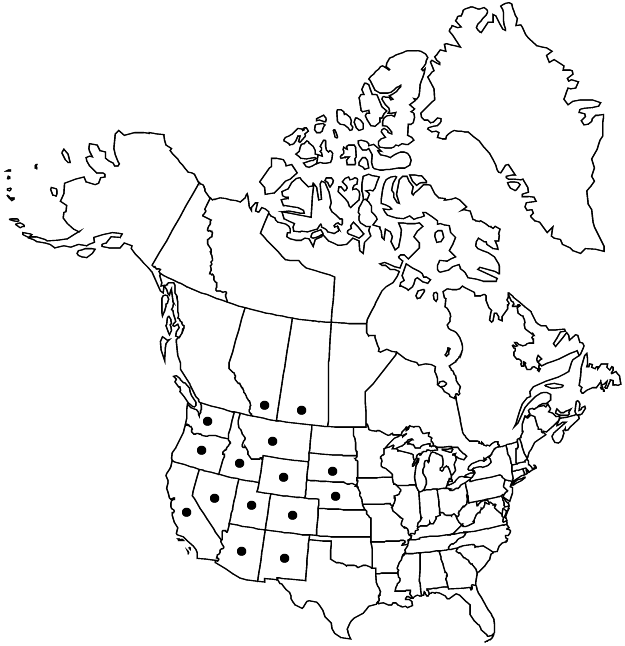Eriogonum cernuum
Proc. Acad. Nat. Sci. Philadelphia 4: 14. 1848.
Herbs, spreading to erect, annual, 0.5–6 dm, glabrous, grayish, greenish or reddish. Stems: caudex absent; aerial flowering stems erect, solid, not fistulose, 0.3–2 dm, glabrous. Leaves basal or sheathing up stems 2–10 cm; petiole 1–4 cm, tomentose; blade round-ovate to orbiculate, (0.5–)1–2(–2.5) × (0.5–)1–2(–2.5) cm, white- to grayish-tomentose abaxially, tomentose to floccose or glabrate and grayish or greenish adaxially, margins plane. Inflorescences cymose, open to diffuse, 5–50 × 5–40 cm; branches glabrous; bracts 3, scalelike, 1–2 × 1–2.5 mm. Peduncles spreading to ascending or deflexed to cernuous, infrequently absent, straight or curved, slender, 0.1–2.5 cm, glabrous. Involucres turbinate, (1–)1.5–2 × 1–1.5 mm, glabrous; teeth 5, erect, 0.4–0.7 mm. Flowers 1–2 mm, glabrous; perianth white to pinkish, becoming rose to red; tepals dimorphic, those of outer whorl pandurate, those of inner whorl obovate; stamens mostly exserted, 1–2 mm; filaments pilose proximally. Achenes light brown to brown, 3-gonous, 1.5–2 mm, glabrous.
Phenology: Flowering Apr–Oct.
Habitat: Sandy to gravelly or clayey flats and slopes, mixed grassland, saltbush, sagebrush, and mountain mahogany communities, oak, pinyon-juniper, and conifer woodlands
Elevation: 600-3100(-3300) m
Distribution

Alta., Sask., Ariz., Calif., Colo., Idaho, Mont., Nebr., Nev., N.Mex., Oreg., S.Dak., Utah, Wash., Wyo.
Discussion
Eriogonum cernuum is widely distributed, being infrequent to common or even abundant and weedy. It is common throughout most of its range in southeastern Oregon, eastern California, southern Idaho, Nevada, Utah, northern Arizona, and New Mexico. The species is rare in southeastern Washington (Franklin County). It is less common and more widely scattered in Colorado, Wyoming, and Montana, and on the northern Great Plains in southern Alberta and Saskatchewan, western South Dakota, and western Nebraska. The northern Great Basin phase, with sessile involucres, has been called var. viminale, but this difference now appears to be ecologic rather than genetic.
Seeds of the nodding wild buckwheat were gathered by the Navajo (Diné) people, pounded into a meal, and eaten dry or made into a porridge (P. A. Vestal 1952; L. C. Wyman and S. K. Harris 1951).
Selected References
None.
